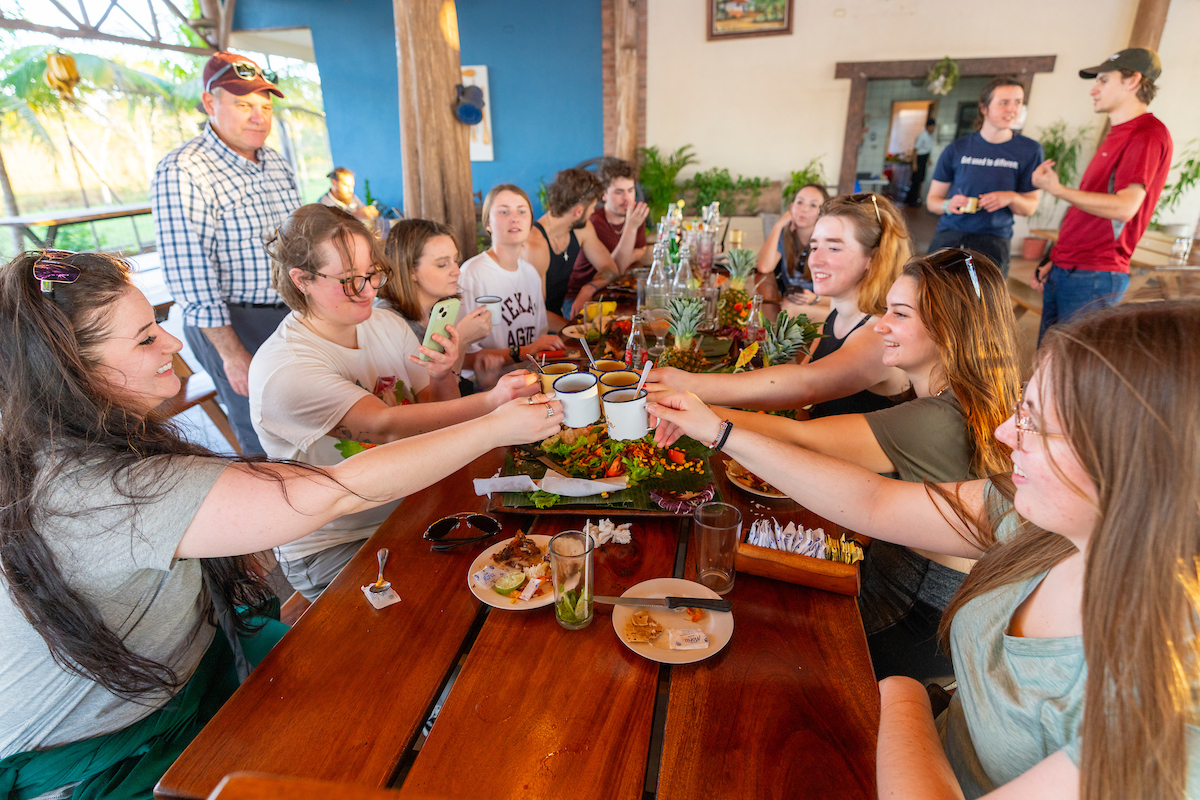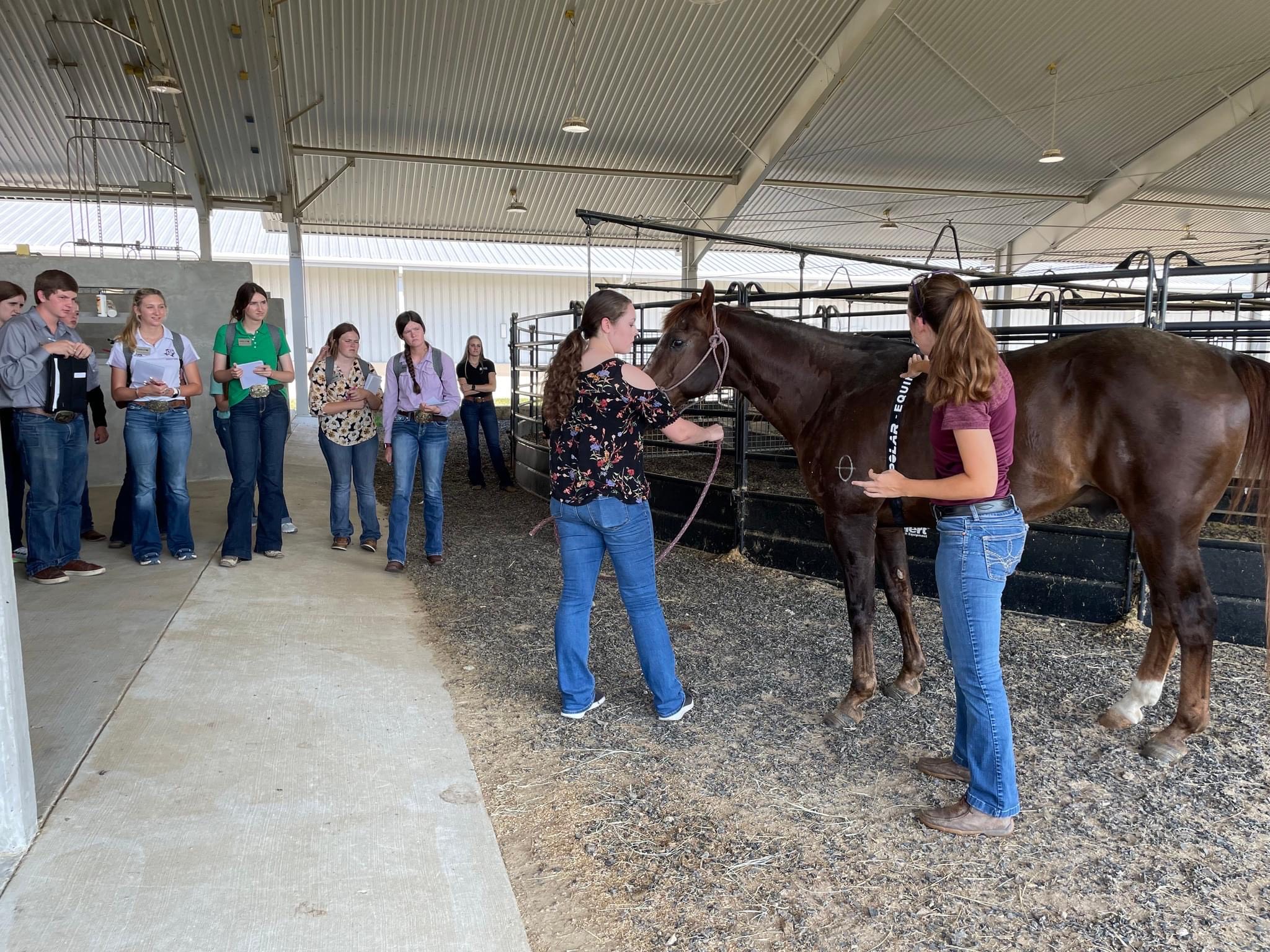Finding the ‘whey’ to a food science degree at Texas A&M
International graduate student explores his curiosity for the complexity of food science
While many students are following their passions through their studies at Texas A&M University, few have traveled as far as Muhammad Bilal Haider to do so.

Growing up in Punjab, Pakistan, Haider harbored dreams of becoming a software engineer through most of his school days. It wasn’t until college approached that Haider stumbled upon food science — and immediately became enthralled.
“Despite being accepted into a college for software engineering, the allure of unraveling the mysteries of food — the intricate relationships among carbohydrates, fats, proteins and their complex coexistence — became irresistible,” Haider said. “The more I delved into the world of food science, the more I fell in love with the subject.”
Choosing to follow his passion over the more familiar territory of software engineering, where one of his three brothers had already staked a claim, Haider embraced the fascinating journey of exploring the science of the foods we consume.
Here, Haider details his path into a degree from the Department of Food Science and Technology in the Texas A&M College of Agriculture and Life Sciences and offers advice to prospective students.
What influenced your choice to study food science at Texas A&M?
The primary influence on my journey has been the strong support and guidance from my family, particularly my older brothers. Their unwavering encouragement and belief in the power of education have been instrumental in shaping my academic pursuits.
I completed my undergraduate studies in food science from the University of Agriculture Faisalabad in Pakistan in 2021. Following that, I pursued my master’s degree from Bahauddin Zakariya University, Multan, graduating in 2022. I then undertook an extensive search for a suitable Ph.D. program, driven by a passion for advanced research and education.
In the spring semester of 2023, I was honored to be admitted into the Ph.D. program in the Texas A&M Department of Food Science and Technology. This milestone marked the continuation of my academic journey, and it also served as a testament to the dedication and hard work I’d invested to achieve it.
What has your experience as a graduate teaching assistant been?
As a graduate teaching assistant for the online course Religious and Ethnic Foods, I’ve had the privilege of delving into the diverse world of food cultures, regulations and traditions. This course, instructed by Dr. Mian Riaz, is a fascinating exploration of religious and ethnic foods, with a focus on product development, production and nutritional practices. It addresses the diverse food rules, priorities and traditions across various cultures worldwide.
Teaching this course has been a unique and enriching experience. With an average enrollment of 1,200 students each semester, it stands as one of the most popular and largest courses in the College. The students, coming from various majors, show a keen interest in understanding foods from different cultures.
Teaching and interacting with students in this diverse and expansive setting have not only enhanced my teaching skills but also allowed me to learn about different cultures, their foods and the intricate regulations and laws governing them. It’s been a truly enjoyable and enlightening experience.
Could you share insights into your current research project?
I am working in the Cereal Quality Lab under Dr. Riaz and Dr. Joseph Awika, head of the department. My research focuses on the concept of upcycling waste whey as a novel food ingredient in meat alternatives.

I use different legumes like peas, lentils and fava beans to create meat analogues. The underutilized whey, a byproduct of cheese production, becomes a pivotal component. Whey, being a high-quality protein source with essential amino acids, enhances the texture and protein content of plant-based meat alternatives.
What excites me most about this research is the opportunity to address the challenges faced by the plant-based meat industry. Whey’s functionality and nutritional benefits make it an ideal ingredient for blending with legumes, offering a solution to taste and texture issues for meat alternatives.
Moreover, repurposing whey addresses cost challenges, while its established use facilitates scaling up of production and ensures regulatory compliance. This integration of whey into meat alternatives not only supports ongoing innovation and development but also aligns with the industry’s goal of mimicking traditional meat more effectively and gaining consumer acceptance.
What are your ambitions for your career or next steps you hope to accomplish?
My overarching career objective is to apply my higher education to an environment that allows me to explore my abilities and contribute effectively to this field. I aspire to work as a scientist in a research and development department, and I’m particularly drawn to companies renowned for their commitment to innovation and quality in the food sector.
Being part of such organizations aligns with my vision of making a meaningful impact on the food industry, addressing challenges and contributing to the development of sustainable and innovative food products. I look forward to applying my research and skills to real-world scenarios, ensuring that my contributions positively influence the industry’s trajectory.
Are there other organizations you enjoy being involved with?
Beyond my academic and research pursuits, I engage in a variety of extracurricular activities and organizations. I am a proud member of the Pakistan Society of Food Scientists and Technologists, where I have previously organized different events, contributing to the vibrant food science community in Pakistan.
Recently, I joined the Institute of Food Technologists and am delighted to be part of this global organization dedicated to advancing the field of food science. It provides a valuable platform for networking, learning and staying updated on the latest developments in the industry.
Locally, I participate in events with the Islamic Community of Bryan-College Station, which I thoroughly enjoy. Also, being a member of the Muslim Students’ Association at Texas A&M further connects me with the community on campus.
Do you have any advice for prospective food science students?
First, I advise students to embrace curiosity and exploration. The field of food science is diverse and continually evolving, so staying curious will fuel your desire to learn and adapt to new developments.
Second, actively seek out opportunities for hands-on experience and practical application of your knowledge. Whether through internships, research projects or involvement in relevant organizations, these experiences will not only enhance your understanding of the field but also set you apart in a competitive job market. Engage with professors, industry professionals and fellow students. Networking opens doors to mentorship and career opportunities.
Last, stay updated on industry trends and technological advancements. The food science landscape is dynamic, and staying informed will empower you to contribute meaningfully to the field and position yourself as a valuable asset.





